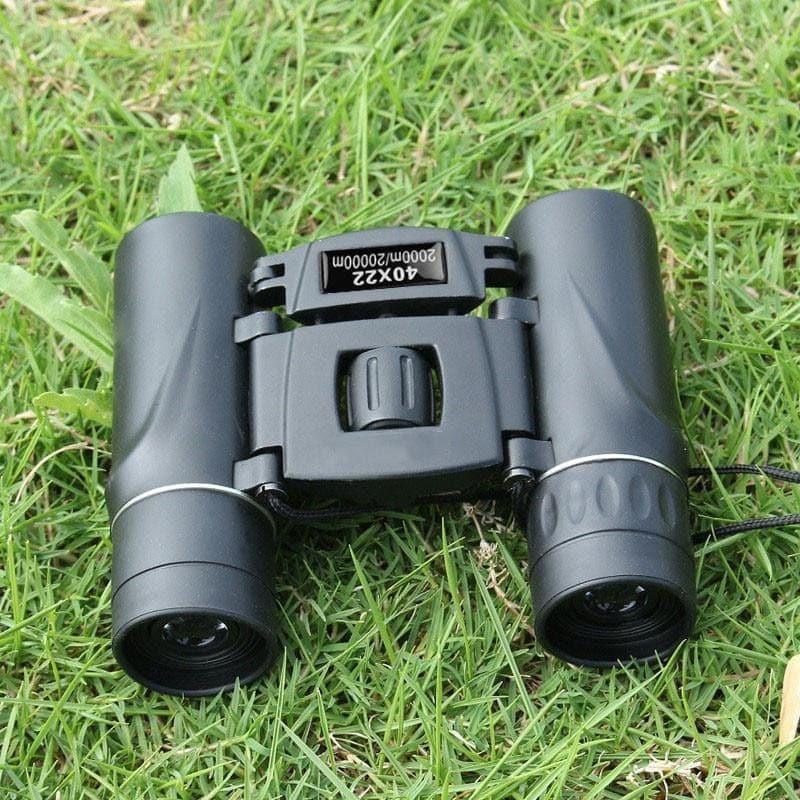Whether you're planning a wildlife trip, enjoying bird watching from your backyard, or gearing up for a concert or stargazing night, the right pair of binoculars can truly elevate your experience. But with so many types, specs, and brands out there, figuring out how to choose binoculars can feel overwhelming.
In this guide, we’ll walk you through everything you need to know to confidently buy the best binoculars for your needs—whether it's night vision binoculars, thermal binoculars, or the best binoculars for bird watching.
Why Choosing the Right Binoculars Matters
The world looks a lot different through the right lens. A great pair of binoculars can mean the difference between spotting a rare bird and missing it entirely, or seeing a blurry concert stage versus clear facial expressions. Each activity has different optical needs, and choosing the wrong pair can result in fatigue, eye strain, and wasted money.
What Do the Numbers on Binoculars Mean?
Let’s tackle a common question: what do the numbers on binoculars mean? If you’ve seen “10x42” on a pair of binoculars, here’s the breakdown:
-
10x – This is the magnification power. The object will appear 10 times closer than with the naked eye.
-
42 – This is the diameter of the objective lens in millimeters. Larger lenses mean more light, which usually translates to a brighter image—especially important in low-light conditions.
So, 10x42 binoculars offer decent magnification and good brightness, making them a versatile choice for general use.
Step-by-Step: How to Choose Binoculars
1. Know Your Purpose
Ask yourself: what are you primarily using binoculars for?
-
Bird watching: Look for 8x42 or 10x42 models. These strike a good balance between zoom and light capture.
-
Hiking & Travel: Compact models like 8x25 or 10x25 are lightweight and portable.
-
Stargazing: Opt for higher magnification like 15x70. You may need a tripod for stability.
-
Hunting or wildlife viewing at night: Night vision binoculars or thermal binoculars are ideal.
2. Understand Prism Types
There are two main prism designs:
-
Roof prism – Slim, compact, and durable. Ideal for travel and sports.
-
Porro prism – Bulkier but offers better depth and wider field of view at a lower cost.
For bird watchers or outdoor enthusiasts, roof prism binoculars offer convenience without compromising too much on image quality.
3. Check the Field of View (FOV)
A wider field of view helps you spot moving objects more easily. If you're bird watching or watching sports, go for binoculars with a larger FOV.
4. Consider Eye Relief
Eye relief is crucial for eyeglass wearers. Look for binoculars with 15mm or more in eye relief for a comfortable viewing experience.
How to Buy Binoculars: What to Look for Beyond Specs
When shopping, it’s tempting to just compare magnifications and prices. But there are subtle features that really make a difference in performance:
-
Waterproof & Fog-proof: If you'll be outdoors, especially near water or in variable weather, these features are must-haves.
-
Lens Coating: Fully multi-coated lenses improve brightness and reduce glare.
-
Build Quality: A rubberized grip, sturdy chassis, and lightweight materials make for a more comfortable experience.
Where to Buy Binoculars
You can buy binoculars online or in-store. If you're new to using them, we recommend testing in-store if possible. However, many reliable online stores offer easy return policies.
Some trusted places to buy binoculars include:
-
Official brand websites (like Nikon, Bushnell, Vortex)
-
Outdoor and sporting goods stores
-
Amazon (make sure you're buying from authorized sellers)
-
Specialty optics retailers
Comparing Popular Binocular Brands
Let’s take a quick look at some of the top binocular brands and what they’re best known for:
🔭 Vortex Binoculars
Well-regarded for rugged build and lifetime warranties. Great for hunting and outdoor adventures.
🔭 Bushnell Binoculars
Affordable and reliable, often used by beginners or casual users.
🔭 Nikon Binoculars
Known for outstanding optical quality and lightweight designs. A good pick for travel and wildlife viewing.
Best Binoculars for Bird Watching
For bird watching, clarity and comfort are key. You’ll want to go for something that allows long viewing sessions without strain. Models like Nikon Monarch 5 8x42 or Vortex Viper HD 10x42 are often recommended. They offer crisp imaging, generous eye relief, and solid low-light performance.
Should You Consider Night Vision or Thermal Binoculars?
Absolutely—if your adventures continue after sunset. Night vision binoculars amplify light and are great for spotting wildlife in darkness. Thermal binoculars, on the other hand, detect heat and are perfect for spotting warm-blooded animals through trees, brush, or even fog.
Just note that both tend to be more expensive and may require batteries.
Quick Tips to Keep in Mind
-
Avoid going overboard with magnification. Higher isn’t always better; image shake becomes a real issue.
-
Don’t ignore comfort. If you’re planning long use, padded neck straps and lighter models are worth the investment.
-
Trust your hands and eyes. If it feels good and the image looks great to you—that’s what matters most.
Final Thoughts
Choosing binoculars doesn’t have to be complicated. Whether you're birding, hiking, stargazing, or observing wildlife at night, there's a perfect pair out there waiting for you.

